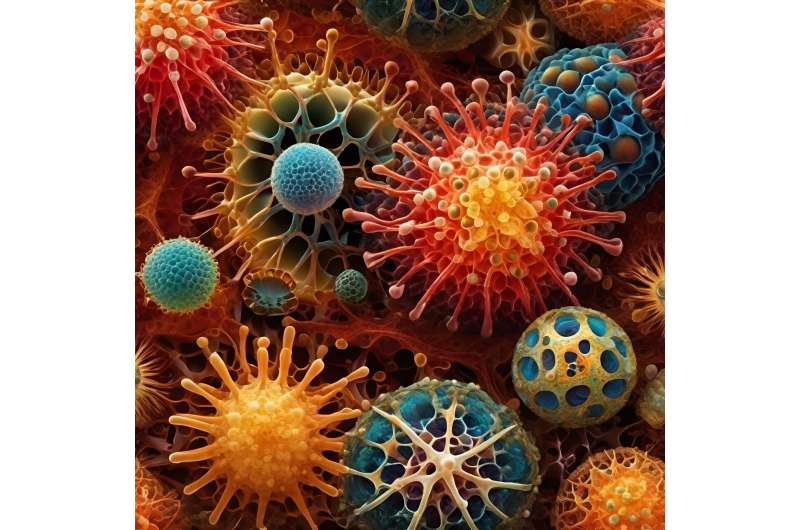
Nanoparticles have unique properties that make them exceptional tools with a variety of applications, from medicine to electronics. One of the lesser-known facts about them is that their surface plays a crucial role in their behavior and functionality.
Research led by Vladimir Baulin, distinguished researcher at the Department of Physical and Inorganic Chemistry of the Universitat Rovira i Virgili and Wolfgang Parak, a lecturer at Universität Hamburg, has revealed that molecules called ligands can create unique local environments within the nanoparticle surface. The results of this research have been published in Accounts of Chemical Research.
The study has shown that ligands act as a protective layer that provides stability to the nanoparticles and prevents them from accumulating. But their influence goes beyond just stability.
According to this research, ligands can also change their surface charge by attracting or repelling ions. This modifies the effective charge of the nanoparticle and, therefore, its properties. This phenomenon is known as “Debye screening.”
“This change in the charge can have a domino effect, and affect other properties that may initially have been overlooked. This local environment can have a significant impact on the behavior of the nanoparticle, altering its interactions with other molecules and affecting its functionality,” adds Baulin.
Understanding the role of ligands and their ability to create different local environments is central if the research field is to determine how they can affect the behavior of nanoparticles in applications such as sensing, drug delivery or catalysis
In particular, this phenomenon of altering surface properties has significant implications for sensing applications. The concentration of the substances being measured can vary considerably if they are near the surface of the nanoparticle compared to the solution in general. Understanding and exploiting this variation can lead to the development of more accurate and sensitive detection technologies.
In addition, the role of ligands can also be exploited to modulate chemical reactions that take place near the surface of the nanoparticle. By carefully engineering ligands, environments can be created that selectively filter out molecules, accelerate reactions, or attract specific proteins, even at low concentrations.
These findings can have a significant impact on various fields, from health to chemical production and nanotechnology.
More information:
Florian Schulz et al, Local Environments Created by the Ligand Coating of Nanoparticles and Their Implications for Sensing and Surface Reactions, Accounts of Chemical Research (2023). DOI: 10.1021/acs.accounts.3c00139
Journal information:Accounts of Chemical Research
Provided by
University of Rovira i Virgili

READ MORE
Chemo side effect caused man’s eyelash growth to go haywire
Some medicines can inadvertently cause people’s eyelashes to grow incredibly long. A man’s eyelashes grew [...]
Viking Chess Pieces May Reveal Early Whale Hunts in Northern Europe
Researchers discovered hnefatafl game pieces made of whale bone in upper- and middle-class Vendel graves. [...]
Why salvage construction materials?
Plumbing is one of the most-popular categories of salvaged construction materials. Want to learn more? [...]
Stretching metals at the atomic level allows researchers to create important materials for quantum applications
University of Minnesota chemical engineering and materials science researchers have developed a breakthrough method for [...]
2D material may enable ultra-sharp cellphone photos in low light
2D APS. a, 3D schematic (left) and optical image (right) of a monolayer MoS2 phototransistor [...]
Oil Field Pictures
How Witches’ Brews Helped Bring Modern Drugs to Market
The image of a witch brewing her cauldron reigns in Halloween celebrations today. But, what [...]
Treating cancer with light-sensitive nanoscale biomaterials
Combined PDT/PTT approaches for the treatment of brain tumors. Dual function nanoparticles are used for [...]